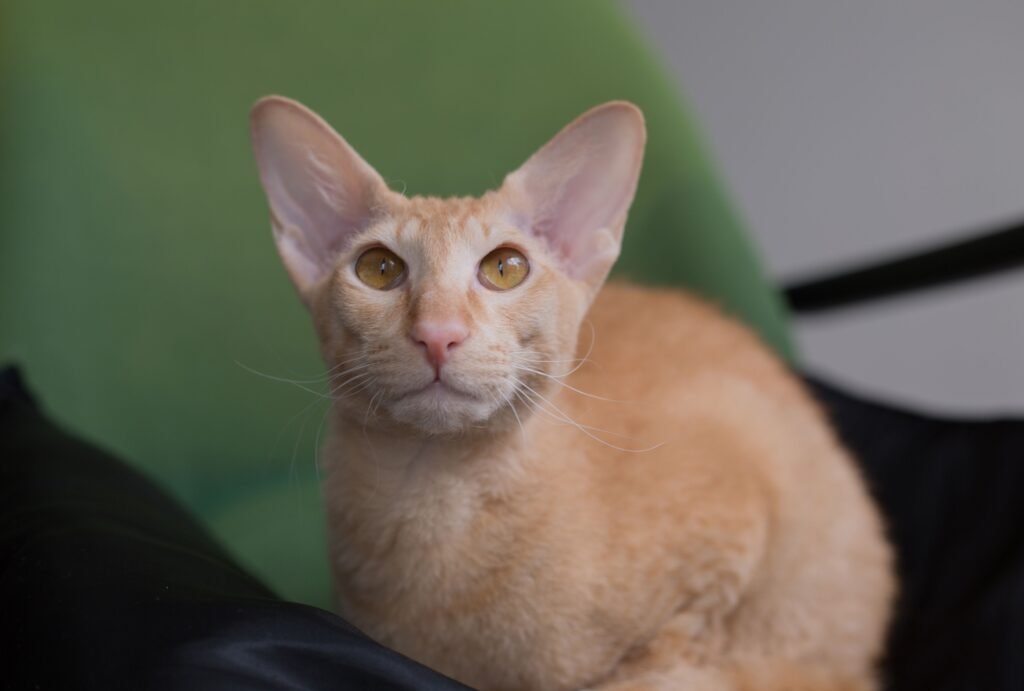Most people are familiar with popular cat breeds like the Siamese or Maine Coon, but beyond the mainstream lies a fascinating world of rare and exotic cat breeds — some wild-looking, others regal or even mysterious in appearance.
These unique felines often come with distinct personalities, striking features, and sometimes, very specific care requirements.
If you’re a cat lover with an eye for the unusual, or simply curious about the world beyond tabbies and torties, here’s your guide to some of the most exotic cat breeds — and what to know before bringing one home.
1. Savannah Cat
Origin: USA (cross between a domestic cat and an African serval)
Appearance: Long-legged, lean body with large ears and bold, spotted coats — like a mini cheetah.
Unique Traits:
- Highly intelligent and active
- Dog-like loyalty and playfulness
- Known for their athletic jumping and curiosity
Special Care:
- Needs lots of space and stimulation
- Not ideal for first-time owners
- May require legal permits in some regions due to their wild ancestry
2. Chausie
Origin: Hybrid of domestic cats and jungle cats (Felis chaus)
Appearance: Tall, athletic, and exotic-looking with a short coat in solid or ticked patterns
Unique Traits:
- Extremely energetic and social
- Intelligent and trainable
- Forms strong bonds with humans
Special Care:
- Needs plenty of physical and mental activity
- Not great with long periods alone — they thrive on attention
- Best suited to experienced cat owners or multi-pet households
3. Lykoi (The “Werewolf Cat”)
Origin: USA
Appearance: Sparse, patchy coat and wide, haunting eyes — giving a “werewolf” look
Unique Traits:
- Naturally occurring mutation
- Friendly, playful, and surprisingly affectionate
- Curious and alert personality
Special Care:
- Coat may change over time and seasons
- Skin can be sensitive; requires gentle grooming
- Needs warmth — they can get chilly easily due to the thin coat
4. Peterbald

Origin: Russia
Appearance: Elegant and slim with a hairless or peach-fuzz coat and oversized ears
Unique Traits:
- Graceful and social
- Very affectionate — often described as “Velcro cats”
- Intelligent and curious
Special Care:
- Like other hairless cats, they need regular bathing to remove skin oils
- Require warmth — love cozy sweaters and heated beds
- Sun protection is essential if they’re near windows or outside
5. LaPerm
Origin: USA
Appearance: Curly or wavy coat, sometimes ringlets — comes in a variety of colors
Unique Traits:
- Soft, poodle-like fur
- Sweet-tempered and affectionate
- Loves to cuddle but also enjoys play
Special Care:
- Coat is low-maintenance, surprisingly easy to manage
- Occasional brushing helps avoid tangles
- Gentle with children and other pets — great for families
6. Toyger
Origin: USA
Appearance: Bred to resemble a miniature tiger — muscular body with bold, dark stripes
Unique Traits:
- Outgoing, confident, and intelligent
- Often enjoys water and walks on a leash
- Friendly and people-oriented
Special Care:
- Requires daily playtime to satisfy their energy
- Short coat is easy to groom
- Social — does well in busy households
7. Oriental Longhair / Shorthair
Origin: UK (descendants of Siamese cats)
Appearance: Sleek, long body with large ears and almond-shaped eyes; comes in hundreds of colors and patterns
Unique Traits:
- Vocal and expressive — loves to “talk”
- Devoted to their humans
- Agile and lively
Special Care:
- Thrives on interaction — not ideal for being left alone all day
- Needs stimulation and companionship
- Coat care depends on length (shorthairs need less maintenance)
8. Khao Manee
Origin: Thailand
Appearance: Pure white coat with odd-colored eyes (one blue, one gold is common)
Unique Traits:
- Ancient and rare breed, known as “White Gem”
- Playful, intelligent, and alert
- Deeply bonded to their humans
Special Care:
- Prone to deafness (especially blue-eyed Khao Manees)
- Needs regular socialization and attention
- Coat care is minimal but indoor-only lifestyle is recommended
Things to Consider Before Getting an Exotic Cat
While these breeds are stunning and often make incredible companions, they’re not always ideal for every household. Here’s what to think about:
✅ Temperament Compatibility
Some exotic cats are extremely active or vocal. Make sure the cat’s personality suits your lifestyle.
✅ Legal Restrictions
Hybrid breeds like Savannahs and Chausies may be restricted or require special permits in some areas.
✅ Health & Longevity
Rare breeds may have specific genetic predispositions. Choose ethical breeders or consider rescue organizations specializing in rare cats.
Cost of Ownership
Exotic breeds are often expensive, and their care can be as unique as they are — including diet, vet visits, and grooming.
Final Thoughts
Exotic and rare cat breeds bring a touch of the extraordinary into everyday life — but they also ask for a little more time, attention, and understanding. If you’re drawn to their unique looks and personalities, just be sure you’re ready to meet their needs.
Whether it’s the wild elegance of a Savannah or the endearing weirdness of a Lykoi, these cats are as rewarding as they are rare. And if you’re not ready for the responsibility of a rare breed? Remember, shelter cats of all shapes and sizes often have personalities just as exotic — and hearts just as big.

